#December 1987
Text

The Doctor meets Ace
The Doctor Who serial Dragonfire is a sadly underrated story, it has everything comedy, mystery, drama and irony.
Dragonfire is one of the reasons why the Seventh Doctor and Ace, are my favorite characters in the series long history. Dragonfire introduces us to Ace and faintly hints at a new direction for the series for the few years anyway.
#Doctor Who#Classic Doctor Who#Classic Who#The Seventh Doctor#Seventh Doctor#Mel Bush#Sabalom Glitz#Dorothy Gale McShane#Dorothy Ace McShane#Ace McShane#Dorothy McShane#Ace Doctor Who#Dragonfire#Sylvester McCoy#Tony Selby#Bonnie Langford#Sophie Aldred#November 1987#December 1987
8 notes
·
View notes
Text


US Vogue December 1987 ❤️❤️❤️❤️❤️
Sleek and colorful cutout at the top, Liza Bruce's striped/plain monokini swim dress. Down below, a double dose of real color Andre Van Pier's one-shoulder bandeau over Anne Cole's hot pink mini dress. Beauty note: Color balance, -Yves Saint Laurent, warm and neutral make-up.
Découpe élégante et colorée en haut, la robe de bain monokini rayée/unie de Liza Bruce.
En bas, une double dose de couleur réelle Bandeau à une épaule d'Andre Van Pier sur la mini- robe rose vif d'Anne Cole. Note beauté : Équilibre des couleurs, -Yves Saint Laurent, maquillage chaud et neutre.
Photo Irving Penn
Model/Modèle Linda Evangelista
Coiffure Oribe
Makeup/Maquillage Laura Mercier
#us vogue#december 1987#fashion 80s#spring/summer#printemps/été#1988#liza bruce#andre van pier#anne cole#linda evangelista#irving penn#oribe#laura mercier#yves saint laurent beauté
85 notes
·
View notes
Photo

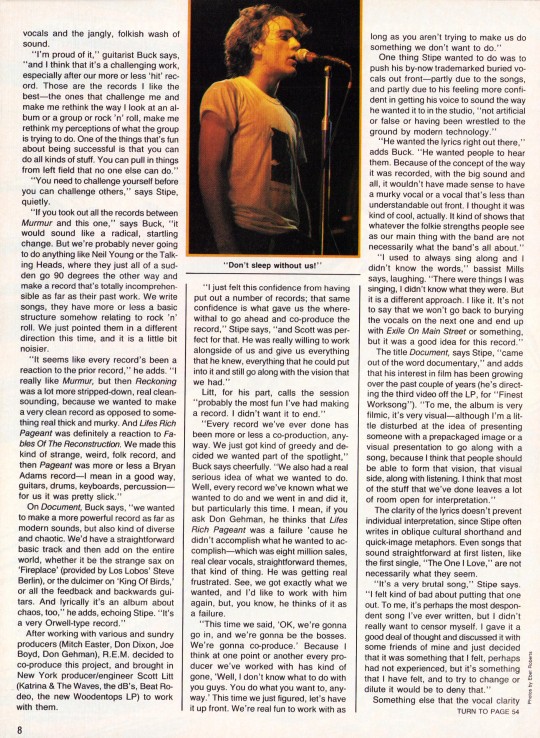

Creem, December 1987
#r.e.m.#rem band#michael stipe#peter buck#bill berry#mike mills#80s#1987#creem#magazine#interviews#december 1987#document#my scans#new scanner
14 notes
·
View notes
Text
Filippe Abreu
100 notes
·
View notes
Text
𝔖𝔬𝔡𝔬𝔪 - 𝔈𝔩𝔢𝔠𝔱𝔯𝔬𝔠𝔲𝔠𝔱𝔦𝔬𝔫
#Sodom#Persecution Mania#Electrocuction#Release date:#December 1st#1987#Full-length#Genre:#Black/Speed Metal (early); Thrash Metal#Themes:#Satanism#Blasphemy (early); War#Death#Politics#Humour#Germany
31 notes
·
View notes
Text

@GregvsMatt December - from the official 1988 Madonna calendar ❤
24 notes
·
View notes
Text
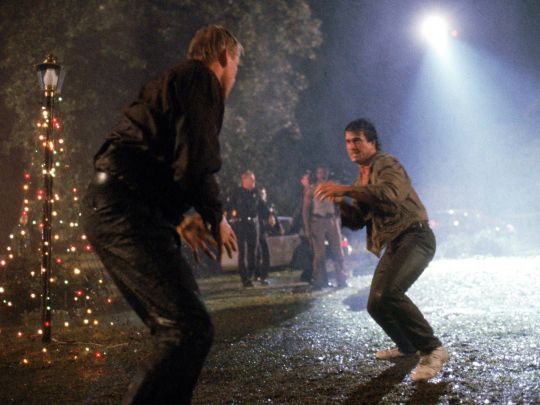
It's not Christmas until Martin Riggs fights Mr. Joshua
#lethal weapon#action#movies#1987#1980s#mel gibson#gary busey#richard donner#publicity stills#christmas#holiday#december
31 notes
·
View notes
Text

3 notes
·
View notes
Photo

“The Parachute,” by U.S. Air Force artist Gregory K.H. Bryant, 12/27/1987.
Record Group 330: Records of the Office of the Secretary of Defense
Series: Combined Military Service Digital Photographic Files
Image description: A drawing of a parachute attached to a small, peanut-shaped basket. In the basket is a man wearing a suit and hat.
#archivesgov#December 27#1987#1980s#art#drawing#parachute#Gregory K.H. Bryant#not the author I don't think#lotta military stuff on this tumblr lately but tbh no one else is working this time of year
42 notes
·
View notes
Text
The New Universe inprint began to close with it's first graphic novel, The Pitt, which had a cover date of April, 1988. On December 22, 1987 at 6:06 EST, the city of Pittsburgh and it's surrounding area was destroyed by the Star Brand. Nearly half a million people were killed. The crator left behind filled with mysteries becomes known as the Pitt. ("The Pitt", Graphic Novel, New Universe)
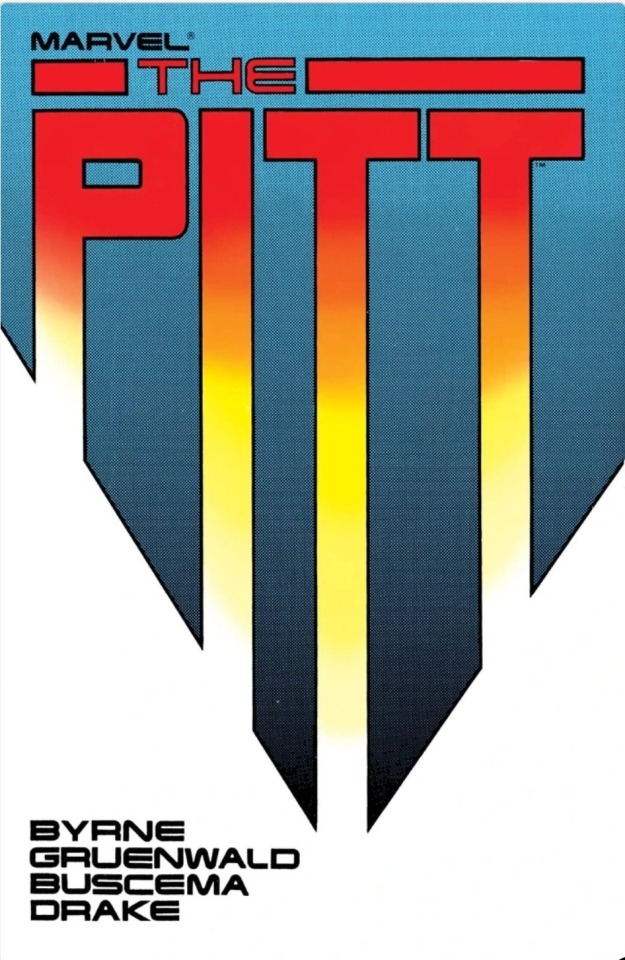
#nerds yearbook#real life event#comic book#marvel#marvel comic#new universe#april#1988#december#1987#the pitt#pittsburgh#john byrne#mark gruenwald#sal buscema#apocalypse#star brand#starbrand#the witness#nelson kohler#macintye browning#spitfire#jenny swensen#ken connell#super hero
10 notes
·
View notes
Photo
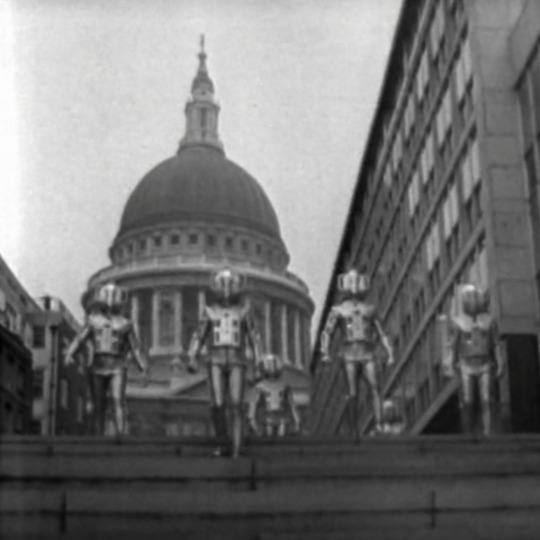



Doctor Who episodes that aired on the 7th of December…
In 1963, The Forest of Fear (the 3rd episode of An Unearthly Child)
In 1968, The Invasion Episode Six
In 1987, Dragonfire Part Three
In 1988, Silver Nemesis Part Three
#Doctor Who#Cybermen#One#Ian#Mel#Seven#The 60s and the 80s#The monsters and the companions#At the end of Dragonfire Mel leaves the Tardis. And Ace joins!#1963#1968#1987#1988#December
27 notes
·
View notes
Text

US Vogue December 1987 ❤️❤️❤️❤️❤️
Christy Turlington in a natural Golden Island fox cardigan - pure gold to black. From Karl Lagerfeld Furs. Below, a sparkle of pewter sequin dress by Suzana Monacella. Suga Hair. Make-up Andrea Paoletti.
Christy Turlington dans un cardigan naturel en renard Golden Island - or pur à noir. De Karl Lagerfeld Fourrures. En dessous, un éclat de robe en sequins étain de Suzana Monacella. Suga Hair. Maquillage Andrea Paoletti.
Photo Denis Piel
vogue archive
#us vogue#december 1987#fashion 80s#spring/summer#printemps/été#golden island#karl lagerfeld#suzana monacella#suga hair#andrea paoletti#denis piel#christy turlington
74 notes
·
View notes
Photo
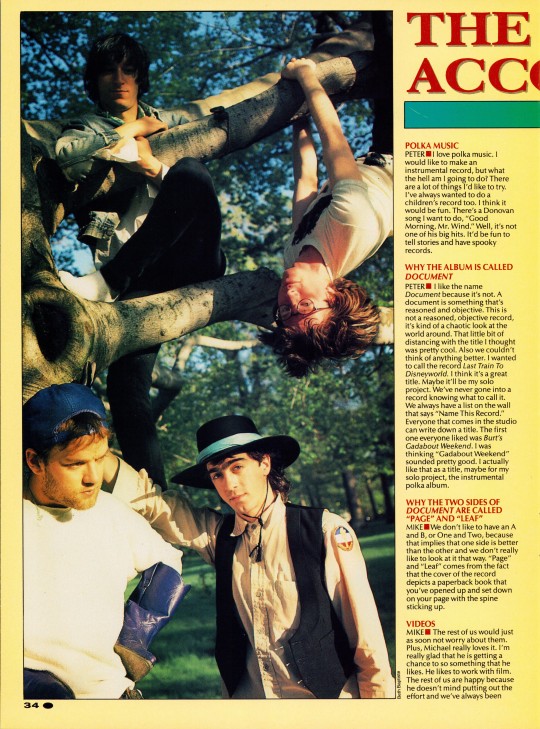
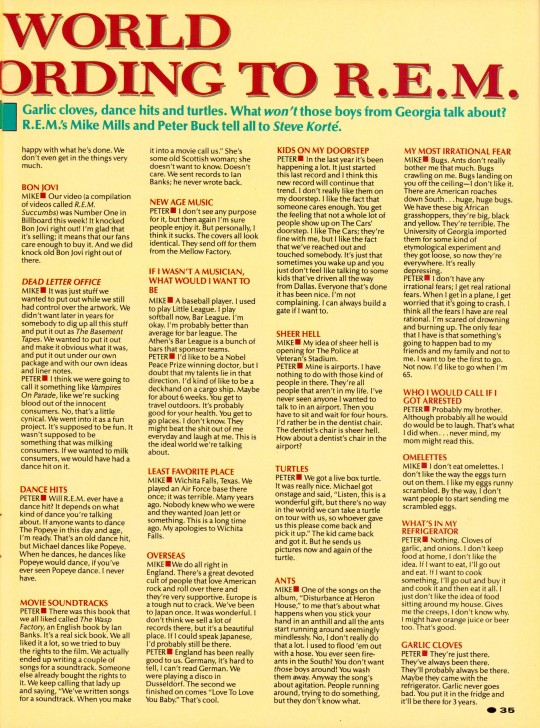
From Star Hits, December 1987
#r.e.m.#rem band#michael stipe#peter buck#bill berry#mike mills#80s#1987#star hits#magazine#december 1987#interviews#my scans#new scanner
17 notes
·
View notes
Text


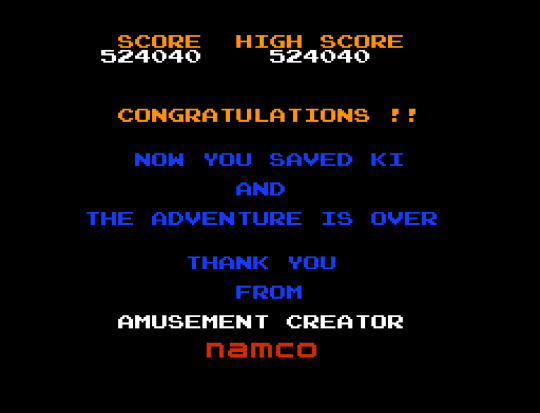
[Hi! For... god, years now, I've had this massive Spreadsheet (yes, it requires a capital letter) of retro JRPGs I've wanted to (1) play my way through and (2) blog about. (1) was fairly easy after I stopped trying to play on original hardware, but I found it surprisingly hard to do (2) without it devouring all my free time. So instead of a dedicated blog, I'm just gonna do these short summary posts here whenever I beat a game. There's two in the backlog right now, starting with...]
What it is: The Tower of Druaga (ドルアーガの塔 Druaga no Tō) for Famicom, released on the 6th of August, 1985, developed and published by Namco. Based on the arcade game of the same name from June 1984, also published by Namco and chiefly designed by Masanobu Endō, creator of early scrolling shmup Xevious, it's the first game in - the Spreadsheet as a whole, yes, but also the Babylonian Castle Saga, a collection of (for the most part) vaguely RPG-like action games that tell the story of a prince named Gil, his lover, the priestess Ki, and their quest to restore peace to their loosely-Babylonian fantasy world.
What it's about:
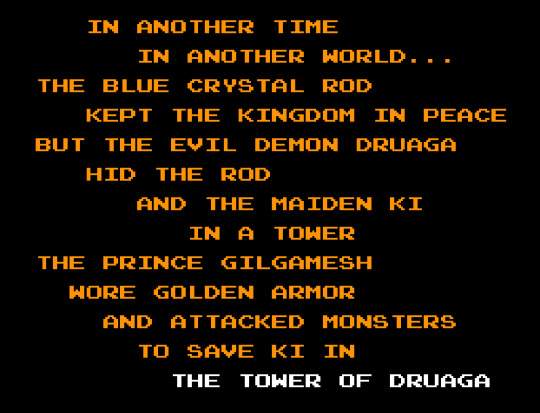
I think the attract screen puts it pretty well! There's some more wrinkles to the backstory, which I mostly got from a strategy guide released at the time - an invading empire, the goddess Ishtar, the precise mechanics behind why, exactly, this is our heroes' last chance to save their kingdom - quite a lot for a mid-80s arcade game. It's pretty thin by RPG standards, but as a setup, it works, and I found it surprisingly engrossing.
How it plays: How do you make an RPG work in the arcade? Apparently, you turn it into a Pac-Man clone. Okay, that's a little flippant; Druaga may be a maze chase game, but there's a lot more going on in it than in most arcade games of its day. On the surface, it's a game about running around mazes, killing monsters, and grabbing keys to get to the next floor, until you defeat Druaga and rescue Ki on the top of the tower. All you have to do is fight your way to the sixtieth floor, right?
In any other arcade game of its era, maybe, but not here. Almost every floor of the tower also contains a hidden treasure that can only be revealed by performing a specific action unique to that floor. The higher Gil gets up the tower, the more he'll need them, from books to reveal the layout of darkened floors to a series of items that turn the increasingly common dragons from the most dangerous enemies in the game to an easily ignored afterthought. Pretty much every useful item in the game (there's several duds and a few traps) is needed to defeat Druaga, so knowing where they are and how to reveal them is absolutely key to beating the game.
The catch - because of course there's a catch - is that neither the treasures' locations nor their revealing methods are signposted at all. Every single one has to be trial-and-error brute-forced out, and they can get pretty arcane - entering a fairly long cheat code, defeating several enemies in a specific order, walking over a particular tile in a particular direction... The intent was for arcade-goers to 'solve' the game together, figuring out all its secrets over the course of weeks or months, but when you don't have a friendly mid-80s Japanese arcade crowd to help you out all you're left with is a mountain of guesswork. Or a walkthrough, which has been a standard bonus feature on its Namco Museum rereleases since the mid-90s.
What I thought: I had a lot of fun with this game! Admittedly I was using a walkthrough (in Japanese, because part of the purpose of the Spreadsheet is to practice my language skills) to bypass about half of the Intended Experience™, but the other half, the straightforward arcade action Pac-Man-with-a-sword gameplay loop, was engaging enough in its own right. Gil controls really well, you never feel like you're fighting the programming instead of the monsters, you can always tell why you died even if the game took a cheap shot, and its insanely generous continue system lets you jump right back to the level you were on with all your items intact when you run out of lives. It's still tough, but it's tough in a fair way, breaking up its fast-paced action into discrete digestible chunks with a chance to breathe between every floor. And frankly, though it is 1980s quarter-muncher hard, I've played indie puzzle platformers that were much worse.
And I do think it succeeds at distilling the RPG into an arcade format, though the result is only an RPG by the loosest possible definition. Despite the lack of numbers and exploration (well, in a sense) there's a distinct feeling of progression to Gil's journey up the tower, a kind of character growth uncommon to - basically any genre outside the RPG in 1984. As Gil collects treasures, he grows faster, stronger, better at navigating the labyrinths, to the point that, despite the increasingly tougher challenges the game throws at you, it almost gets easier the further along you get. With the continue system I mentioned, you can even jump back to floors you've already cleared (mostly to replace a particular item that occasionally breaks) and breeze through the monsters that once gave you so much trouble. It's this kind of thoughtful design that makes me really appreciate Druaga, more than I honestly expected to when I first booted it up. Give it a try, it's pretty good!
#tales from the retro jrpg Spreadsheet#babylonian castle saga#the tower of druaga#famicom#1985#namco#retro rpg#true story: in the time between starting this post and finishing it i have beaten a third rpg#it's the original zelda. fuck you that's an rpg#but yeah by the standards of modern games druaga (with a walkthrough) is... moderately hard but not severely so#you ever play cuphead? it ain't as hard as cuphead#we'll next see gil and ki in the quest of ki (1987)#but the next game on the Spreadsheet comes out in december 1985#called bokosuka wars. see you then!
2 notes
·
View notes
Text
𝔎𝔦𝔫𝔤 𝔇𝔦𝔞𝔪𝔬𝔫𝔡 - 𝔗𝔥𝔢 𝔉𝔞𝔪𝔦𝔩𝔶 𝔊𝔥𝔬𝔰𝔱 ⛧🜏☥
#King Diamond#In Concert 1987: Abigail#Live album#December 7th 1990#Recorded at various King Diamond shows during the 1987 Abigail Tour.#Genre: Heavy Metal#Lyrical themes: Conceptual storylines about horror and occultism#Denmark#The Family Ghost
12 notes
·
View notes
Text
RIP Scout tf2 you woulda LOVED Jackass
#yo future me have you forgotten about this joke by the time it posts?#bet you have. loser#he tried to start jackass actually and that’s how he died on december 4th 1987#scout tf2#tf2#team fortress 2
20 notes
·
View notes